Celosia comb: description, planting and care
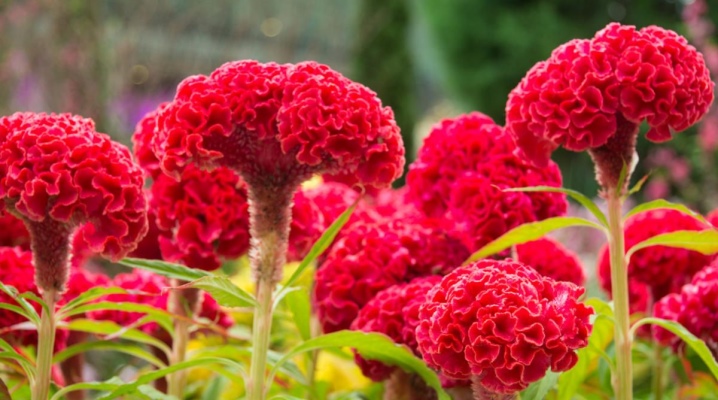
Celosia comb is a bright annual flower that is successfully grown both in summer cottages and at home. The name of the culture comes from the Greek kelos, which means "fiery, blazing". If your choice fell on this interesting plant, and you want to grow it yourself, you should familiarize yourself in more detail with the characteristic features and nuances of crop care.
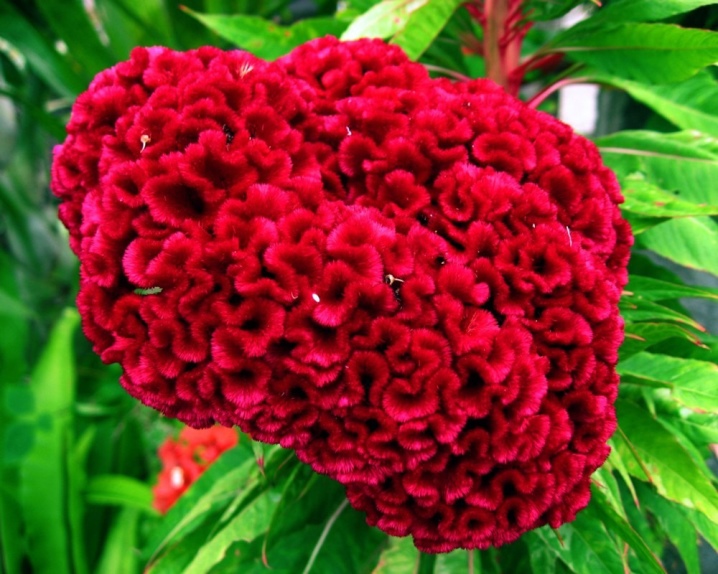
Description
Cockscomb in another way is called cockscomb. The name came for a reason, since the inflorescences are indeed very similar to bright rooster combs. The plant belongs to the amaranth family, is grown as an annual because it does not tolerate frost. In a natural habitat, the height of a celosia is about 45 cm, but in a home or garden, the culture rarely grows above 30-35 cm.
The flowers of the plant are small in size, gather in large inflorescences in the form of scallops. The colors are represented by almost the entire warm range of colors: yellow, orange, red, hot pink, crimson.
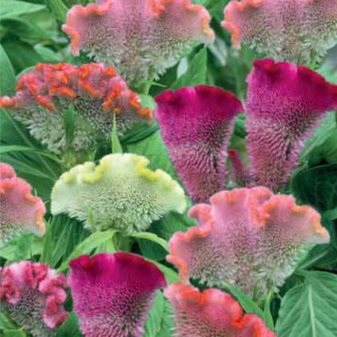

As for the fruits, these are small boxes containing seeds. Their gardeners use them for the subsequent cultivation of crops. The plant begins to bloom in July and ends in mid-October.
If we talk about interesting facts related to cezion, then it can be noted that the peoples of Africa widely use this plant for food... Culture and medicine are also used: decoctions from the leaves of rooster combs successfully fight many inflammatory processes in the body.
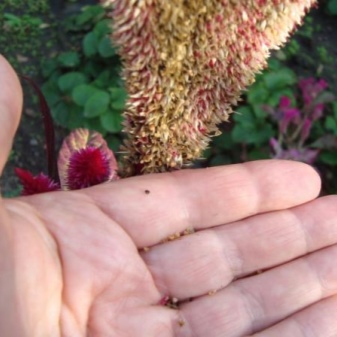

Common varieties
Consider several varieties of crested comb, which are most often chosen by gardeners.
"Impress"
This is a plant with light green leaves and airy inflorescences. The color ranges from burgundy to bright scarlet. The height of the culture is no more than 25 cm.

"Empress"
Another popular undersized variety, the height reaches 30 centimeters. Scarlet veins are clearly visible on the leaves, and the buds have an attractive purple color.

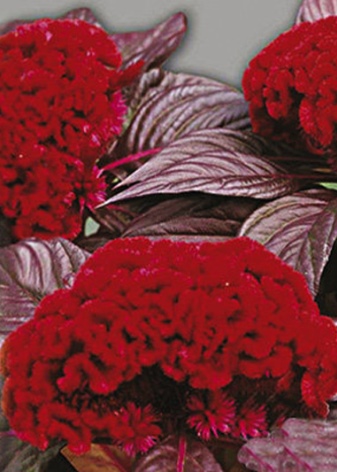
"Atropurpurea"
Celosia with huge, very heavy, bright inflorescences. The stem is pink and the leaves have a light green tint. Height - about 20 cm.
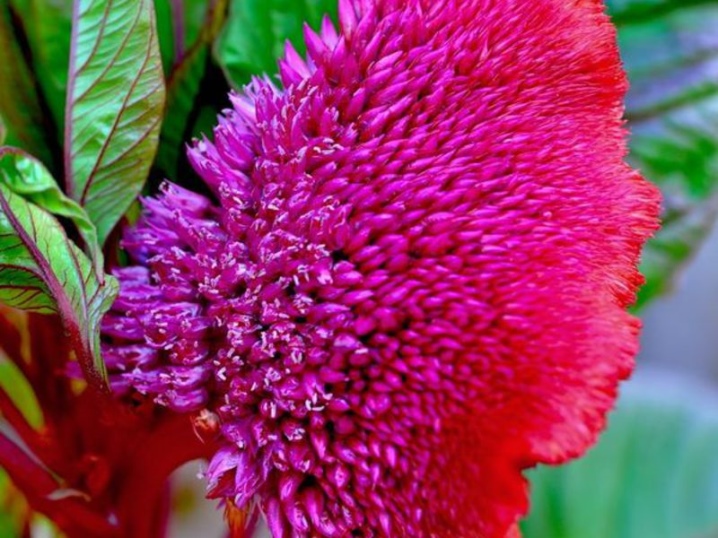
"Coral Garden"
This velvet variety can reach as much as 50 cm in height, therefore it is most often grown in a garden. The stems are straight, rather fleshy. Inflorescences are small, scallop-like, very bright.
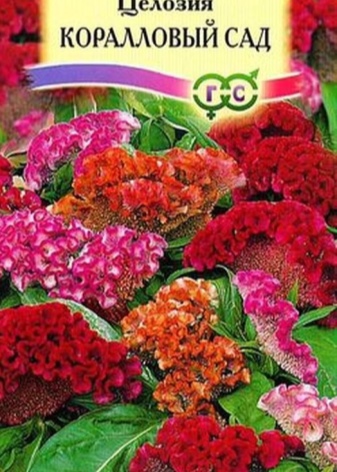
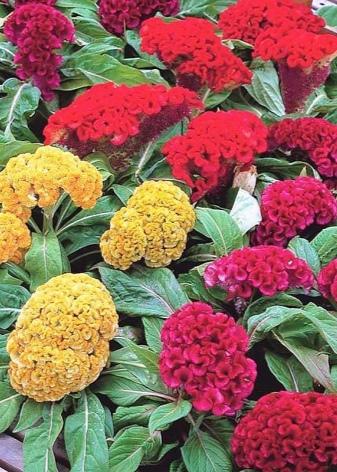
Reproduction
To get planting material, in the fall, you need to cut off a few wilted inflorescences. They should be dried in a dark and cool place. After this is done, the inflorescences must be shaken over the paper, and the finished seeds are poured out of the plant in abundance. These seeds are put in tightly closed containers and placed in the refrigerator.
In early April, the seeds are ready for planting. But first they need to be processed. This will help tools such as "Zircon" and "Epin". In a glass of plain water, dissolve a drop of each of the preparations, and the inoculum is soaked for 4 hours. In addition, it will be useful to treat the land and seeds with a manganese solution - this will strengthen the plantings, make them less susceptible to diseases.
Several grooves are made in the soil (in the container), but you can simply loosen it and place the seeds.
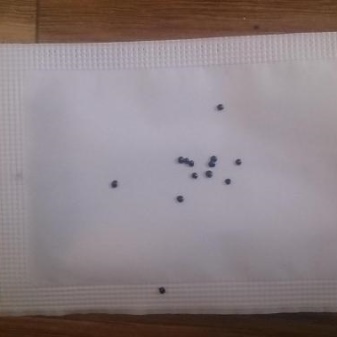
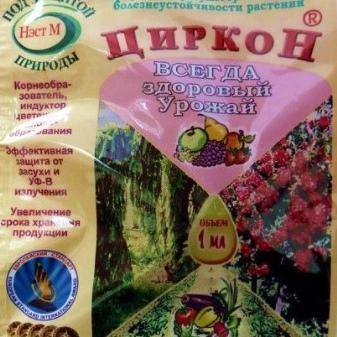
A soil made of humus and vermiculite, with a small addition of clean sand, is suitable as a soil.
They do not fall asleep with soil from above, only slightly press down and spray from a spray bottle. Then they cover it with polyethylene, and put the container with the material in the warmest part of the apartment on a well-lit window sill. Wherein the temperature in the apartment should not fall below +25 degrees Celsius... Periodically, the polyethylene should be opened so that the sprouts are ventilated.
A little more than a week will pass, and you will see the first sprouts. When 2 leaves appear on each of them, the sprouts will need to dive, planting each in a separate container. When the plants are well grown, they are planted in a permanent pot and fed with mineral complexes.
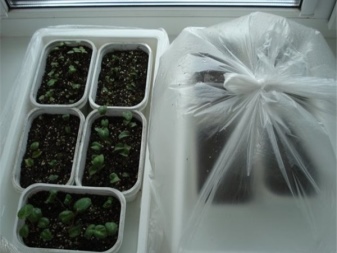
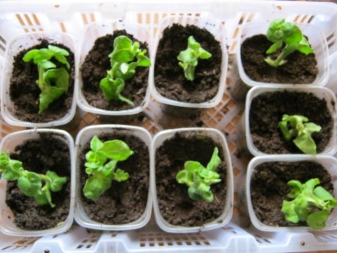
Landing
We have already disassembled the planting at home, but often the plant is also planted in open ground.
Cockscombs are very fond of the sun, so they should be planted in well-lit areas where there will be no frequent drafts.
Celosia are planted in groups, the distance between low-growing bushes should be about 15 cm, between large ones - at least 35. The optimal time for planting is the end of May, when you will be sure that there will not be snow and frost. The correct air temperature is about +20 degrees Celsius.
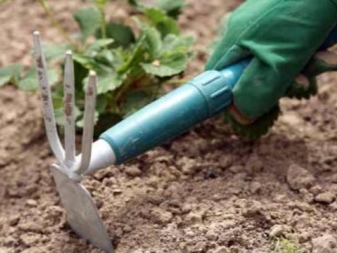
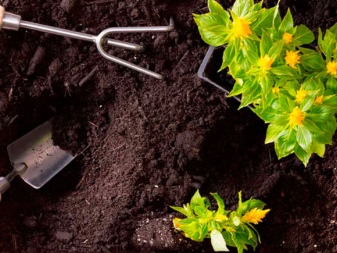
The soil should be light, fertile, slightly acidic. If the acidity is increased, liming is used. After the place is chosen, and everything is prepared, they begin to plant the plants. This is done by the transshipment method: the plant is removed from the pot along with an earthen clod and planted in the ground. This will help the culture take root well. In the case when the scallops were dived into the peat pots, it is allowed to plant flowers in the soil directly in them. After planting, the plants are watered.

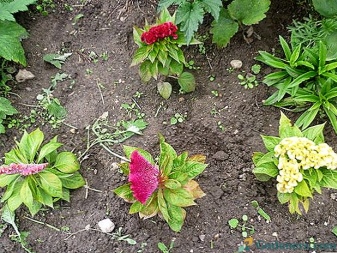
Follow-up care
Care activities include several mandatory stages.
Watering
Both indoor and garden celosia do not tolerate waterlogging well. Therefore, such plants should be watered sparingly, only when the soil dries up. In the rainy season, you can generally do without watering before the onset of hot weather. After the supply of water, the garden celosia must loosen, and also uproot the weeds that have appeared.
The correct time for watering is the earliest morning, but if this is not possible, you can postpone the event to the evening. The water must first settle, and many gardeners use rainwater - this is the best option. The temperature of the liquid should be at room temperature, since cellosia does not tolerate cold water, even if it is hot outside, it may even die from this.
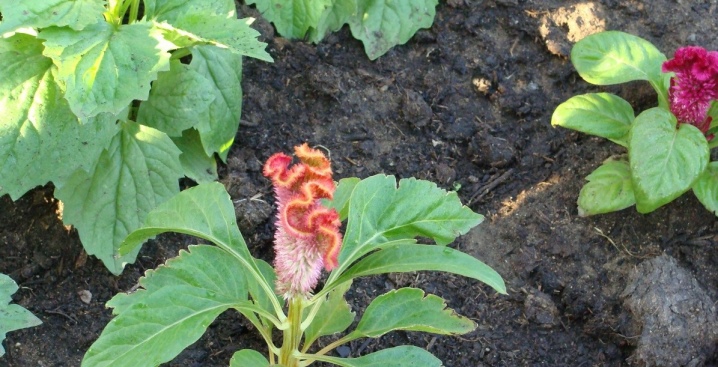
Fertilizers
Top dressing should be dosed. They begin to do this in the second month. For these purposes, phosphorus and potassium are used. Many gardeners also add nitrogen, but this must be done very carefully. If you overdo it, then the plant will quickly gain green mass, but it will not have enough strength for flowers.
Complex fertilizers should be applied monthly. However, experienced gardeners advise using a different tactic: divide the fertilizer into several parts, dilute in water and give with each watering. Thus, it is possible to ensure that the concentration of nutrients in the soil will be at the desired and stable level, excluding excess.
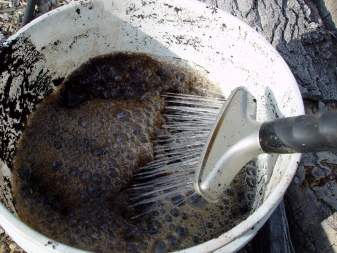
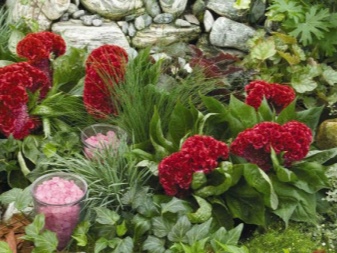
As for the shelter for the winter, it is not carried out, because even with the best shelter, the plant will not survive.
The cockscombs are cut and left to dry in order to obtain seeds. Besides, the plant is stored for a very long time in a dried form, so after collecting the seeds, you can put it in a vase and enjoy the delicate aroma.
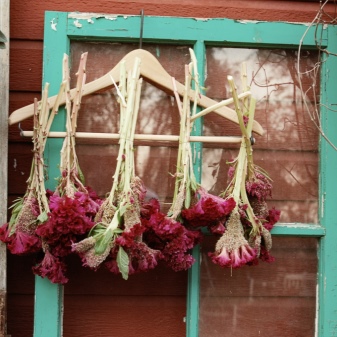
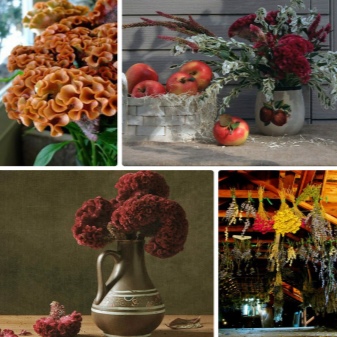
Disease and pest control
In general, cetacean crested quite well resists all sorts of ailments, the exceptions are only very young plants that have not yet received proper immunity.
One of the main diseases of the culture is the black leg. It appears as a result of excessive moisture in the soil or air, as well as if the plants are too densely planted.The base of the stem turns black, the fungus clogs it, preventing sap flow. As a result, the culture turns yellow, dries up and dies. The gardener needs to remember that the black leg will easily infect other flowers, so it will not be possible to restore the stem from a dying plant. It must be dug up and then destroyed. The land at the site of the dug out flower is treated with wood ash, other plants need to be temporarily not watered. Preventive measures to protect against blackleg are that the seeds are disinfected with manganese even before planting, and the soil is also spilled with it.
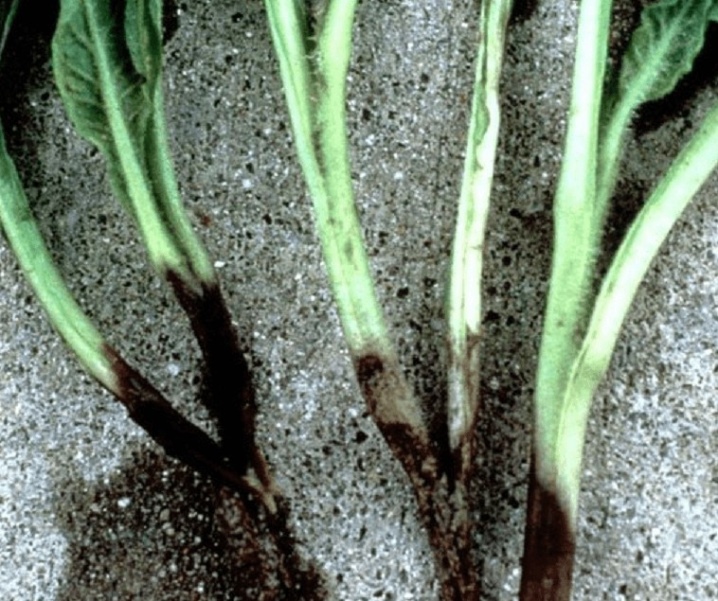
Another ailment is deciduous chlorosis, which arises from a lack of iron. With this disease, the leaves of the culture turn yellow, only the streaks will be bright. Solving the problem is quite easy: you just need to feed the culture with iron and revise the rules for its cultivation.
Of the pests, celosia is most often affected by aphids. It appears where there are a lot of ants, so you need to deal with them in a complex. Semolina scattered around the plants helps well against ants, and you can also destroy anthills by hand. At first, aphids are perfectly washed off with soapy water, but if time is lost and there are too many insects, only strong insecticides will help.
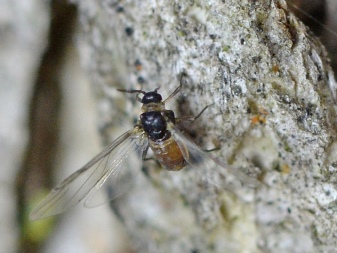
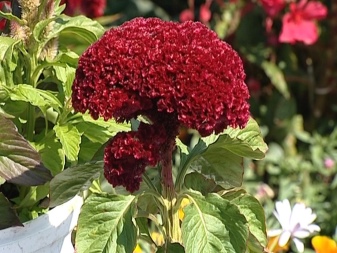
In addition to aphids, plants can also eat up insects such as bears. These creatures are omnivorous, but most of all they like to damage the roots, from which they suck all life juices, causing wilting and death of the plant. Bears live underground, only occasionally getting to the surface. You can destroy them with insecticides, which are best poured into the ground with water. And also many gardeners knead sweet corn sticks and add poison there. After that, the gruel is buried in the ground, and after a few hours the pests crawl to the surface due to lack of air. In addition, marigolds can always be planted along the edges of the flower beds - this will serve as a good preventive measure.
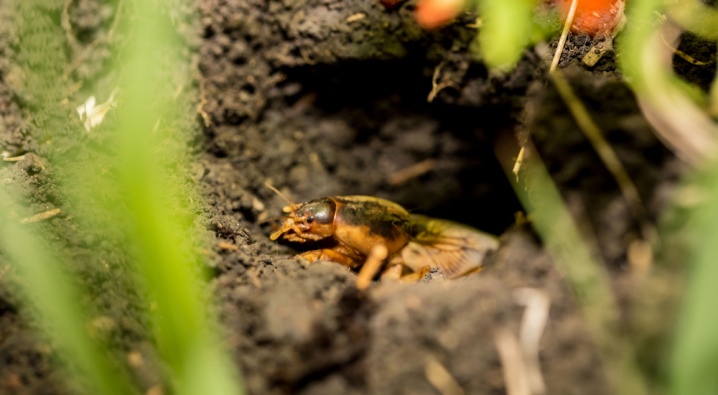
Examples in landscape design
Celosia comb is a frequent guest of many gardeners. She looks great on any site, interestingly complementing it with her bright and rich color.
Most often, cockscombs are planted in groups in flower beds. At the same time, they can be combined with flowers of various shades, but white looks the most impressive.
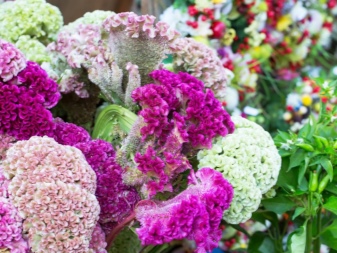

The scallops also look original with marigolds: these flowers are not only beautiful, but also useful, they help against many pests. Besides, celosia can be completely diluted with nothing: in a large flower bed, she will feel great alone. The main thing is to choose several shades, at least two.


This culture is also planted along the paths. To do this, you should choose the most colorful varieties. These flowers will effectively frame the paths and walls of the house, and will also serve as an interesting contrast to other crops in the garden.

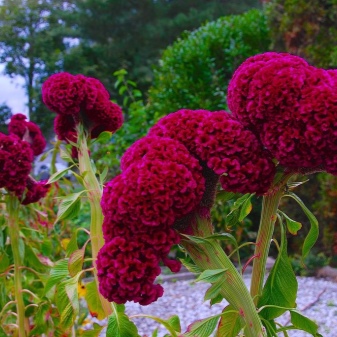
Indoor combs are just as good. By choosing low-growing varieties, you will only benefit, since such saturated spots will be appropriate in any interior, even a classic one. And if you prefer group plantings, then celosia will perfectly decorate the balcony, turning it into a real flower garden.
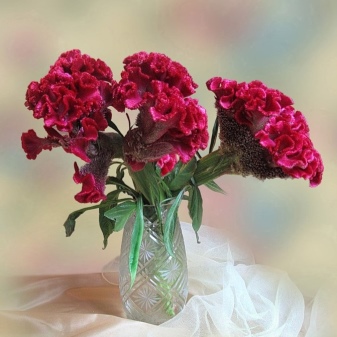
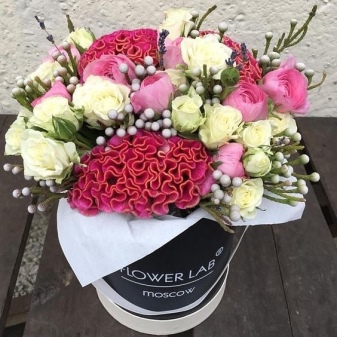
Reviews
Considering the reviews about cetacean crested, we can conclude that very many people fell in love with such a plant. There will be no costs for seeds at all, since every year in the fall, the gardener has the opportunity to collect seed and plant it. In addition, problems with cultivation usually do not arise, since the plant is not too demanding on the soil, the only point here is the need for proper watering.
But most of all summer residents like how beautiful and original culture looks... Interesting in itself, it also goes well with other colors, causing a real extravaganza of colors. Looks great on a flower bed, flower garden, alpine slide, at home, in a park or square.
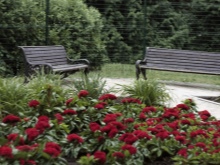
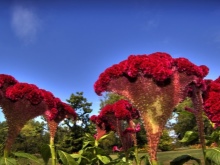
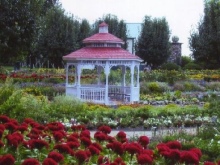
There are also negative aspects.For example, some summer residents do not like the fact that the plant has such a low frost resistance, and it has to be planted again every year. However, there is nothing you can do about it. And also newcomers argue that the culture easily gets sick with fungal ailments, which contributes not only to its rapid death, but also to the rapid infection of other plants on the site. But even here there is a solution: to take into account all the rules of cultivation and strictly follow them.
Thus, crested celosia is a spectacular and very funny plant, which will not be difficult to grow... An interesting and unusual type of culture can easily replace many more expensive and capricious flowers, and the opportunity to admire the inflorescences after flowering will undoubtedly delight any gardener.
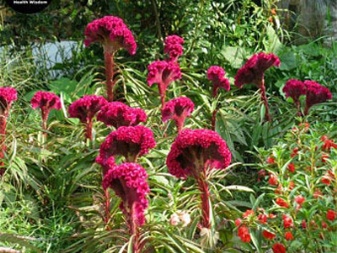
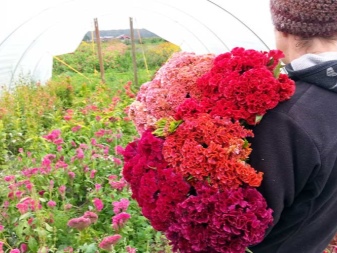
See the video about growing cellosis from seeds and caring for it.







































































































The comment was sent successfully.